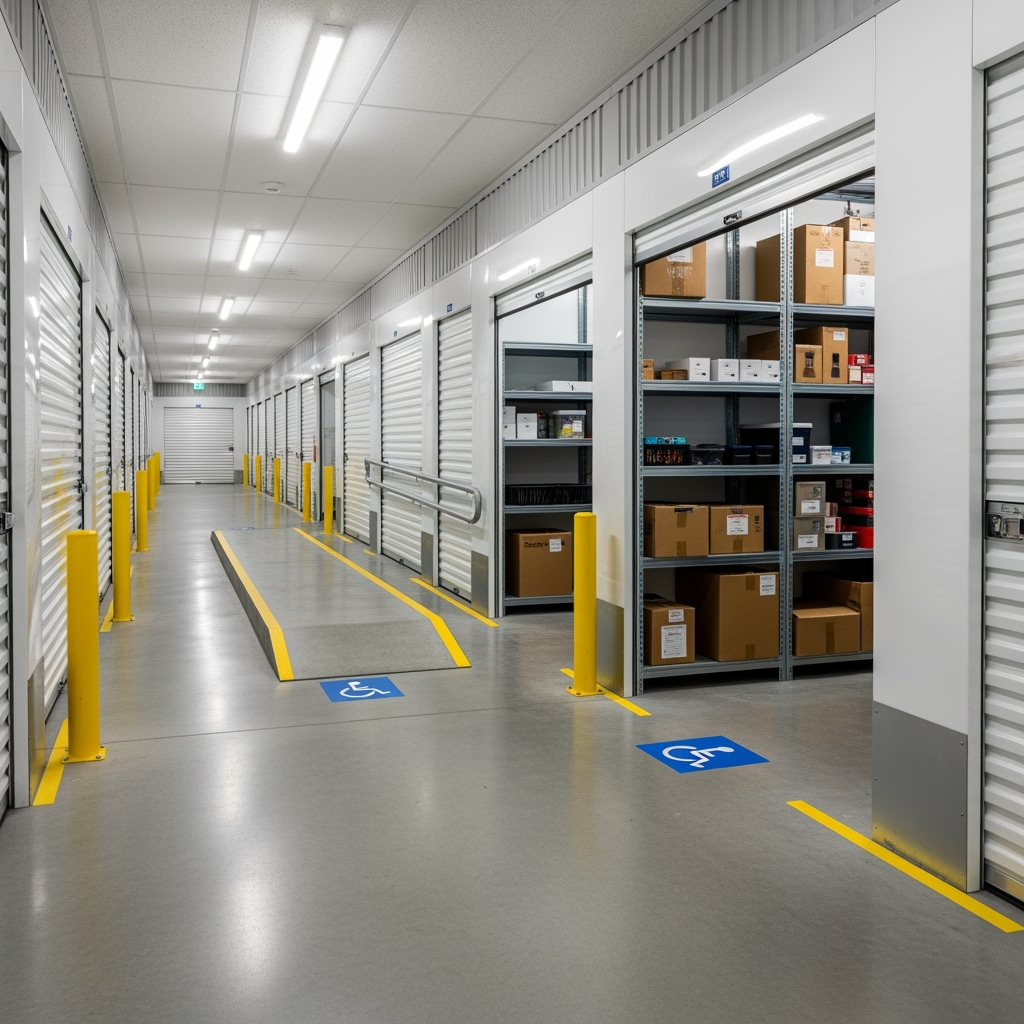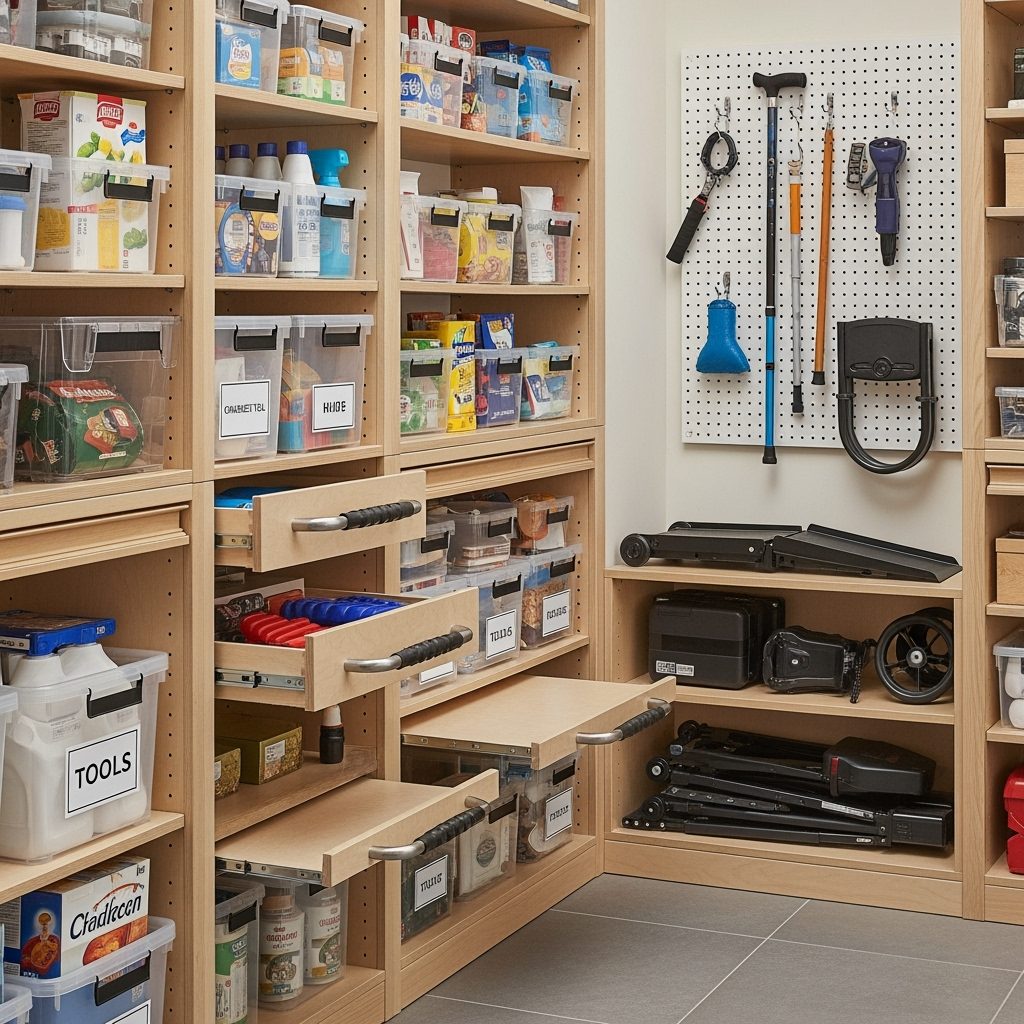Understanding the Need for Accessible Storage
For individuals who use mobility devices, having an accessible storage unit isn’t just about convenience—it’s about independence and dignity. Whether you use a wheelchair, walker, or other mobility aids, your storage space should be as accessible as your home. This guide will help you create and maintain a storage unit that works for your needs while keeping your belongings safe and organized.

Essential Features of Accessible Storage Units
When setting up an accessible storage unit, several key features can make a significant difference in usability and convenience:
- Wide aisles and turning spaces (minimum 5 feet)
- Smooth, level flooring with no lips or barriers
- Ramp access with proper slope and non-slip surfaces
- Motion-sensor lighting for hands-free operation
- Accessible door handles and locking mechanisms
Smart Organization for Accessibility
Organizing your storage unit with accessibility in mind can greatly improve its functionality:

- Install adjustable shelving at comfortable reaching heights
- Use pull-down storage systems for overhead items
- Implement easy-grip handles and pull-out drawers
- Create clear pathways to frequently accessed items
- Label everything clearly with large print or braille if needed
Climate Control Considerations
Climate-controlled units offer additional benefits for mobility device users:
- Temperature regulation helps prevent weather-related accessibility issues
- Controlled humidity protects mobility equipment from rust and damage
- Clean, regulated environment reduces maintenance needs
- Year-round comfortable access regardless of weather
Safety and Security Features
Safety should always be a top priority in accessible storage units:
- Well-lit pathways and entrance areas
- Security cameras and monitoring systems
- Emergency call buttons within reach
- Non-slip flooring throughout the unit
- Fire safety equipment at accessible heights
Tips for Maintaining Accessibility
Regular maintenance helps ensure your storage unit remains accessible:
- Regularly check and adjust shelving systems
- Keep pathways clear and clean
- Inspect ramps and doorways for wear and tear
- Update organization systems as needs change
- Schedule regular maintenance checks for automated features
Planning for Different Mobility Needs
Consider these factors when choosing and setting up your storage unit:
- Current and future mobility requirements
- Frequency of access needed
- Types of items being stored
- Seasonal access considerations
- Assistance requirements and availability
Making the Most of Available Space
Efficient space utilization is crucial in accessible storage units:
- Use vertical space wisely with accessible storage solutions
- Implement modular storage systems that can be adjusted
- Create zones for different types of items
- Install corner protectors and bumper guards
- Leave adequate turning space throughout
Getting Started with Your Accessible Storage Unit
Ready to create your accessible storage space? Follow these steps:
- Assess your specific mobility needs and requirements
- Choose an appropriately sized unit with good access
- Plan your organization system before moving items in
- Install necessary accessibility modifications
- Set up a regular maintenance schedule
With proper planning and implementation, your storage unit can be both accessible and efficient, supporting your independence while keeping your belongings safe and organized.










Leave a Reply